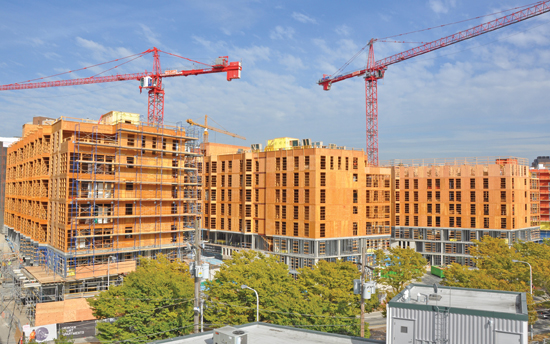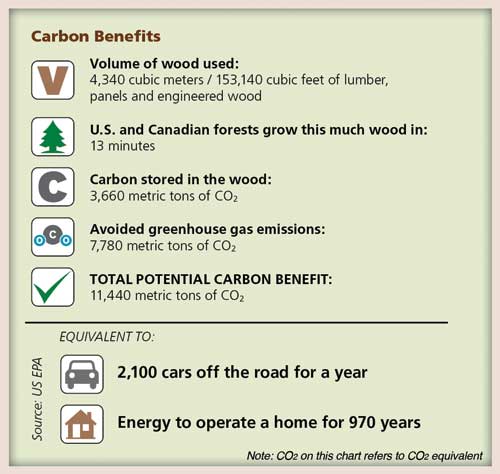Wood Scores A+ for Schools & Student Housing
Carbon Footprint
From a carbon footprint perspective, the use of wood is beneficial because wood continues to store carbon absorbed by the tree during its growing cycle. In the case of buildings, this carbon is kept out of the atmosphere for the lifetime of the structure—or longer if the wood is reclaimed and used elsewhere.
Because manufacturing wood into products requires less energy than other materials, another aspect of wood's carbon advantage is avoided greenhouse gas emissions. For example, constructing a wall using kiln-dried wood studs, OSB sheathing, and vinyl siding instead of concrete with an exterior stucco coating, results in 15 pounds of avoided CO2 emissions for every square foot of wall area. Likewise, using engineered wood I-joists with an OSB sub-floor rather than steel joists and OSB sub-flooring results in 22 pounds of avoided emissions for every square foot of floor area.3
Adding to wood's environmental credentials, life cycle assessment (LCA) studies consistently show that wood outperforms other materials in terms of embodied energy, air and water pollution, and greenhouse gas emissions.4 LCA is an internationally recognized method of evaluating the environmental impacts of materials over their entire life cycle, from extraction or harvest of raw materials through manufacturing, transportation, installation, use, maintenance, and disposal or recycling. It is increasingly being integrated into green building rating systems as a way to understand the true impacts of alternate building designs.
“Although a building's operational energy use is the first thing most people think of in the context of its carbon footprint, it's really just one element,” says Lockyear. “The choice of building materials has a significant impact. Our hope is that, with our carbon calculator, we're giving design and building professionals another tool that supports the objective of low or Net-Zero energy buildings.”
 |
 |
This chart shows the carbon benefits of Mercer Court, another five-building student housing project at the University of Washington.5 Source: US EPA |









